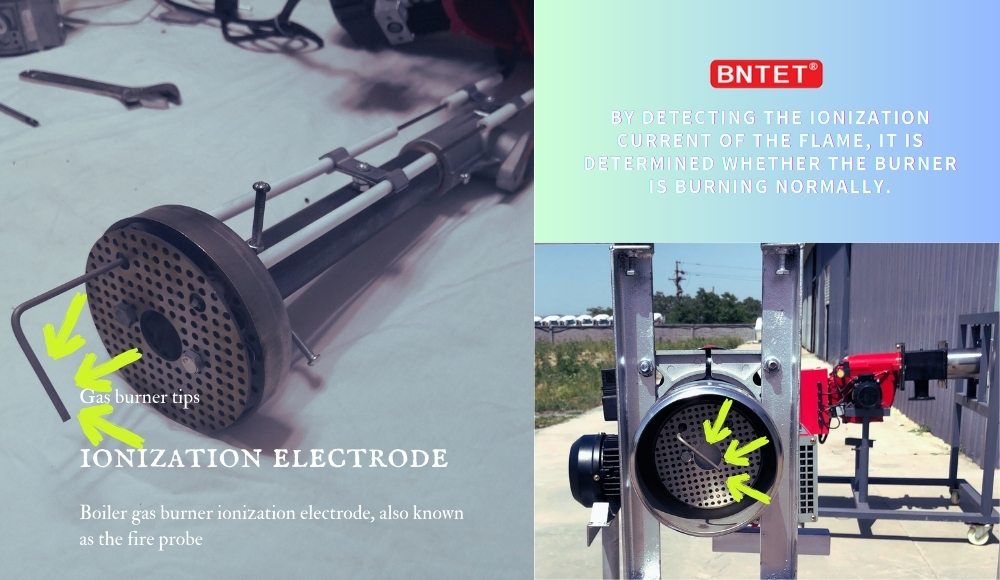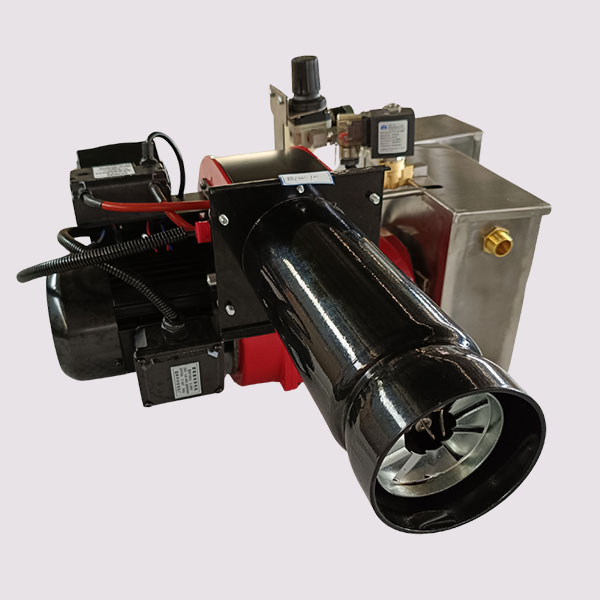What is the Ionization Electrode in a Gas Burner, and What Are Its Functions
2025-05-15 14:41:15
The ionization electrode (also called a flame detection electrode) is a critical component in the safety control system of a gas burner, primarily used for flame detection and ignition assistance. Its working principle and functionality directly impact the burner's safety and stability. Below is a detailed explanation of its roles, structure, and common issues.

I. Functions of the Ionization Electrode
Flame Detection (Flame Failure Protection)
Core Function: Detects the ionization current in the flame to determine whether the burner is operating normally.
Principle: The high-temperature ionized gas in the flame conducts electricity, creating a small current (approx. 1–10 μA) between the electrode and the ground. The control system monitors this current to confirm flame presence. If the current disappears, it immediately shuts off the gas supply to prevent leaks.
Ignition Assistance (Some Models)
In certain burners, the ionization electrode also acts as an ignition electrode, first generating a high-voltage spark to ignite the gas before switching to flame detection mode.
II. Structure of the Ionization Electrode
Material:
Heat-resistant metal (typically stainless steel or nickel alloy), often coated with a ceramic insulator.
Installation Position:
Near the flame root to ensure direct contact with the flame (while avoiding short circuits with the burner’s metal parts).
Connection:
Linked via cable to the burner control module (e.g., LAMTEC, Siemens controllers).
III. Example Workflow
Ignition Phase:
The gas valve opens, and the ignition electrode sparks to ignite the gas.
Flame Detection Phase:
The ionization electrode detects the flame’s ionization current and sends a signal to the controller.
If the current persists, the controller maintains gas supply; if interrupted, it shuts off the gas valve immediately.
IV. Common Issues & Solutions
| Symptom | Possible Cause | Solution |
|---|---|---|
| Burner shuts off after ignition | Dirty or damaged electrode | Clean carbon deposits or replace the electrode |
| Controller shows "no flame" error | Misaligned electrode or cracked insulator | Reposition the electrode or replace the insulator |
| Flame present but undetected | Poor grounding or broken cable | Check grounding and wiring connections |
| Weak ionization current | Poor gas quality (e.g., impurities) | Improve gas supply or adjust electrode sensitivity |
V. Maintenance Tips
Regular Cleaning:
Remove carbon buildup from the electrode surface with fine sandpaper (avoid scratching).
Inspect Insulation:
Ensure the ceramic insulator is intact to prevent short circuits.
Position Calibration:
The electrode tip must be in the most stable part of the flame (refer to the manual).
VI. Ionization Electrode vs. Photoelectric Flame Detector
| Feature | Ionization Electrode | Photoelectric Detector |
|---|---|---|
| Detection Principle | Flame conductivity | Flame light radiation (UV/IR) |
| Compatible Flames | Gas flames (requires ionization) | Gas/oil/biomass flames |
| Interference Resistance | Sensitive to moisture/carbon buildup | Unaffected by conductivity but vulnerable to reflections |
| Cost | Lower | Higher |
Summary: The ionization electrode acts as a "sentry" for gas burner safety, continuously monitoring the flame to prevent hazards. Regular maintenance and proper installation minimize risks of unexpected flameouts or gas leaks. If the burner frequently reports flame failures, inspect the ionization electrode first!







